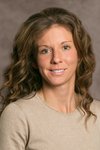


If you are diagnosed with Parkinson’s disease or essential tremor, you are not alone. And, thanks to available resources right here in Northeast Florida, you really can improve your quality of life.
That’s the message Alaine Keebaugh, Ph.D., wants to share.
“I want them to know where they can get those resources so that they don’t feel isolated,” she said.
To make that happen, Keebaugh and others have started support groups for Parkinson’s patients and caregivers. And beginning this fall, they will launch an essential tremor support group.
Neurologists will speak with attendees about ongoing research and medications, and physical therapists and occupational therapists will speak on the importance of exercise.
The groups meet at the COA Center at Flagler Health+ Village, 351 Town Plaza Ave. in Nocatee.
Keebaugh, who holds a doctoral degree in genetics from Emory University School of Medicine, has had a front row seat to some of the latest developments in the field of neuroscience. While at Emory, she observed a deep-brain stimulation procedure that determined the course of her professional life thereafter.
“It was one of those moments in your life where you get chills on the back of your neck,” she said. “It was like: This is what I was meant to do.”
On the recommendation of a Mayo Clinic surgeon, the manufacturer of the deep-brain stimulator, Boston Scientific, hired Keebaugh. She and her husband moved from Atlanta to Jacksonville. Here, she has become involved with Jax Hope Inc., a nonprofit that supports people with Parkinson’s.
Parkinson’s vs. ET
Though both disorders involve tremors in sufferers, Parkinson’s disease and essential tremor (often called ET) are different. Those experiencing symptoms should consult a physician.
Parkinson’s is a neurodegenerative disease, and those who have it experience tremors even when they are at rest. It is perhaps the more serious of the two because it gets progressively worse as neurons in the brain are lost.
Sufferers could eventually experience difficulty in walking. They may become fatigued, and cognition can be impacted.
Though a small percentage of cases may have a genetic link, experts still don’t know what causes it.
Early signs may include a slight tremor in the hand or failure of one arm to swing when the person is walking. Some people report a loss of their sense of smell, sleep disturbances and constipation long before they are diagnosed.
ET, an action tremor, is not neurodegenerative. At rest, the sufferer appears symptom free, but the tremor appears once the person reaches for something. They may have difficulty eating or drinking or signing their name. Otherwise, they are cognitively and physically intact.
ET is about 10 times more prevalent than Parkinson’s, and about half the cases are inherited.
An early sign might be a slight tremor in the hand. It can grow progressively more noticeable and switch sides and can even result in a head tremor or voice tremor.
There is no cure for either disorder, but deep-brain stimulation is making life better for sufferers.
Getting their lives back
Keebaugh plays a key role in deep-brain stimulation procedures and has seen firsthand their effectiveness.
“For many of these patients, this is the first time they haven’t had a hand tremor in maybe 20 years,” she said, calling the experience “really rewarding.”
Unfortunately, some candidates for the surgery fear it and choose to forgo this revolutionary treatment option. Keebaugh said it is not as invasive as it sounds and that “the quality of life that it can give these people is incredible.”
“We can literally do this two-hour procedure and the tremor is gone,” she said. “It literally gives them their lives back.”
After careful planning, the surgeon makes a small incision and opening in the back of the skull and inserts a thread-like electrode. That is connected to a battery, which is placed under the skin below the clavicle. The entire time, the patient is awake but feels no pain, and the neurologist speaks with the patient throughout.
Once the procedure is finished, the neurologist asks the patient to hold out a hand, which is still trembling. Then, Keebaugh turns the device on. And the tremors stop.
“They get symptom relief immediately following the surgery,” Keebaugh said.
Once implanted, the programming can be adjusted as the disease evolves.
This procedure is effective for both Parkinson’s disease and ET.
Keebaugh said she has a “pretty cool job.”
“It’s exciting and rewarding,” she said. “You get to see people get better.”
Learn more
The support group meets at 3 p.m. on the first Wednesday of each month. At the next meeting on Aug. 3, Keebaugh will present “Advanced Treatment Options for Essential Tremor and Parkinson’s Disease.” The public is welcome.
Those wanting to learn more about the support group meetings can email Pam Brunell at pbrunell@stjohnscoa.com.
Additional support group information for the First Coast region is available at jaxhopeinc.org/support-group-assistance or by emailing alaine@jaxhopeinc.org.